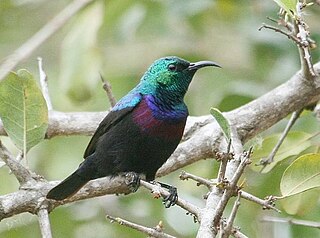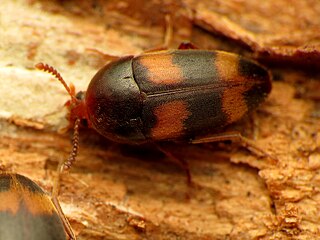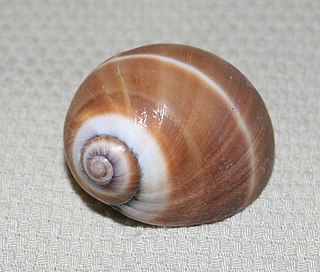Related Research Articles

The olive oropendola is the largest member of the icterid family and rivals the Amazonian umbrellabird as the largest passerine bird in South America. It is sometimes placed in the genus Gymnostinops instead of Psarocolius. As suggested by its name, it is found widely – but often in low densities – throughout humid lowland forests of the Amazon Basin, with the notable exception of most of the Guiana Shield. It is sometimes split into two species, the western olive oropendola and the eastern Pará oropendola, but the subspecies P. y. neivae is widely recognized as a hybrid swarm, and the vast majority of authorities consider them a single species.

The banded rubber frog is a species of frog in the family Microhylidae. It is found in central and southern Africa. Its natural habitats are dry savanna, moist savanna, subtropical or tropical dry shrubland, subtropical or tropical moist shrubland, subtropical or tropical dry lowland grassland, subtropical or tropical seasonally wet or flooded lowland grassland, subtropical or tropical high-altitude grassland, intermittent freshwater lakes, intermittent freshwater marshes, arable land, pastureland, water storage areas, ponds, and canals and ditches. The female can reach a maximum size of 65 mm whereas the tadpoles can reach a size of 37 mm. The maximum size of the male is yet unknown, but sizes differ from 45 mm to 68 mm.

Rhacophorus bifasciatus is a species of frog in the family Rhacophoridae endemic to Indonesia. Its natural habitats are subtropical or tropical moist lowland forests, subtropical or tropical moist montane forests, and rivers. It is threatened by habitat loss.

The purple-banded sunbird is a species of bird in the family Nectariniidae. It is found in Angola, Botswana, Republic of the Congo, Democratic Republic of the Congo, Ethiopia, Gabon, Kenya, Malawi, Mozambique, Namibia, Rwanda, Somalia, South Africa, Swaziland, Tanzania, Uganda, Zambia, and Zimbabwe.

Cuatro Cienegas pupfish is a species of fish in the Cyprinodon genus of the family Cyprinodontidae.

Clypeomorus is a genus of sea snails, marine gastropod mollusks in the subfamily Cerithiinae of the family Cerithiidae.

The chameleon goby is a species of ray-finned fish native to marine and brackish waters along the coasts of eastern Asia. It has also spread to other parts of the world where it is found in waters with varying degrees of salinity.

The Shimofuri goby is a species of goby native to marine, brackish and fresh waters along the coasts of eastern Asia. It has also been introduced to the Pacific Coast of the United States. This species can reach a length of 12 centimetres (4.7 in) TL.
Arhopaloscelis is a genus of longhorn beetles of the subfamily Lamiinae, containing the following species:

Symmorphus bifasciatus, the willow mason-wasp, is a species of potter wasp, from the subfamily Eumeninae of the social wasp family Vespidae which is widely distributed in the Palearctic region.

Pseudocneorhinus bifasciatus, the twobanded Japanese weevil, is a species of broad-nosed weevil in the beetle family Curculionidae.
Notoxus bifasciatus is a species of monoceros beetle in the family Anthicidae. It is found in North America.
Megaderus bifasciatus is a species of long-horned beetle in the family Cerambycidae. It is found in Central America and North America.
Cnemotettix bifasciatus is a species of wetas & king crickets in the family Anostostomatidae. It is found in North America.

Holostrophus bifasciatus is a species of polypore fungus beetle in the family Tetratomidae. It is found in North America.

Epeolus bifasciatus, the cuckoo bee, is a species of cuckoo bee in the family Apidae. It is found in Central America and North America.
Tretioscincus bifasciatus, the Rio Magdalena tegu, is a species of lizard in the family Gymnophthalmidae. It is found in Suriname, French Guiana, Venezuela, Margarita Island, Aruba, Curaçao, Bonaire, and Colombia.

Polinices bifasciatus, or two-banded moon snail, is a species of gastropod mollusc. The animal was first described to science in a work authored by English biologists Edward Griffith and Edward Pidgeon. This was a multi-volume translation of George Cuvier's, Le Règne Animal (1830). The Griffith and Pidgeon work went beyond translation and added a supplement that included the description of Polinices bifasciatus. The description of Polinices bifasciatus is attributed to John Edward Gray. It reads, in its entirety, "Pale brown, with two narrow bands".
Alphitophagus bifasciatus is a species of beetle belonging to the family Tenebrionidae.
References
- ↑ BioLib.cz - Arhopaloscelis bifasciatus. Retrieved on 8 September 2014.